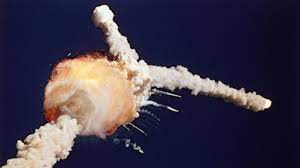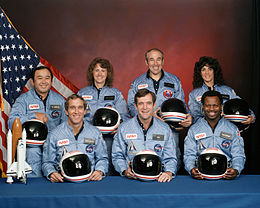On this date at 11:39am EDT in 1986, STS 51L, the Challenger, disintegrated 46,000 feet above the Atlantic Ocean, off the coast of Cape Canaveral, Florida. Challenger broke apart 73 seconds into its flight, killing all seven crew members aboard. It was the first fatal accident involving an American spacecraft while in flight.
The mission was the 10th flight for the Challenger and the 25th flight of the Space Shuttle fleet. The crew was scheduled to deploy a commercial communications satellite and study Halley’s Comet while they were in orbit, in addition to taking schoolteacher Christa McAuliffe into space under the Teacher in Space Project.

The crew:
- Dick Scobee, commander
- Michael J. Smith, pilot
- Ronald McNair, mission specialist
- Ellison Onizuka, mission specialist
- Judith Resnik, mission specialist
- Gregory Jarvis, payload specialist
- Christa McAuliffe, payload specialist, teacher
The disaster was covered live across the nation, especially in schools because of Christa McAuliffe’s participation. She was to be the first participant in the Teacher in Space Project.
That evening, President Ronald Reagan was set to deliver the State of the Union address. He instead delivered these remarks, written by Peggy Noonan, one of Reagan’s speech writers
In the wake of the disaster, President Reagan instituted the Rogers commission to find the causes of the disaster. That commission faulted NASA management for decision making that led to the disaster. NASA suspended Space Shuttle flights for 32 months.


